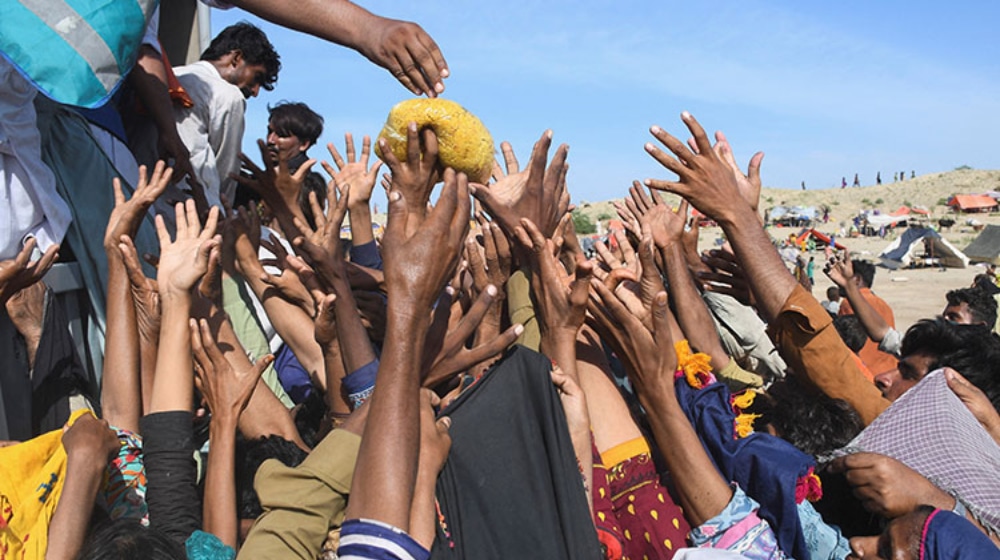According to a World Bank’s new diagnosis, Pakistan’s poverty rate has increased by seven percent in the last three years.
The World Bank today re -claimed prosperity: Pakistan’s poverty, equity and flexible diagnosis, the first review of poverty and welfare trends in the country since the early 2000s.
Addressing a press briefing, World Bank Country Director for Pakistan Bolorama Amgabazar said that the current poverty rate is 25.3 percent in 2022 compared to 18.3 percent. Before reaching 25.3 % in 2024-25, the rate increased to 24.8 % in 2023-24.
He said that between 2001 and 2015, Pakistan recorded a permanent decline in poverty, which was about 3 % down annually. From 2015 to 2018, the reduction pace increased by about 1 % every year. However, since 2020, poverty levels have begun to rise once again, which has intensified the increase by Covade 19.
After a permanent decline from 64.3 percent to 21.9 percent in 2001-02 in 2018-19, the national poverty rate started to rise in 2020. This increase is due to a great deal of complex shock, which includes Kovide 19, inflation, floods, and macroiconum tension, but it has brought the limits to which its consumption growth has been brought.
To identify this, this report calls for permanent and people -based reforms to protect poor and weak families, improve life opportunities, and increase access to basic services for all.
In this report, a 25 -year -old government domestic survey, which is now based on unique sources of estimates, geographical analysis, and administrative data. Government poverty is based on a number of domestic Integrated Economic Survey (HIES) round, which uses Pakistan’s national poverty line and procedure, which is the most related source of policy making.
International comparisons, the report applies the global poverty limit updated in June 2025. Beyond 2018-19, which is the latest survey round, it uses a microsemulation model to present poverty estimates. Survey data-based new estimates will be developed when the recently collected Hies 2024-25 data will be released.
“Pakistan’s hard -winning winning poverty benefits must be protected, while accelerating jobs and opportunities reforms, especially for women and youth,” said Bolormabazar, Pakistan’s World Bank Country Director, said Bolormabazar. “Focusing on the results, investing in people, accessing locations, and opportunities, creating flexibility against shock, preferring financial management, and developing a sales data system for decision -making, Pakistan can put poverty reduction on track.”
The diagnosis shows that over the past two decades, the reduction in poverty in Pakistan was primarily driven by the increasing income of non -agricultural laborers, as more households transferred less quality services to the fields. However, the diversity of obstacles in slow and uneven structure change, the creation of the job and the comprehensive growth. As a result, the increase in revenue in lower productivity in the sectors has been restricted. More than 85 % of jobs are informal, while women and young people exclude Laurus from the labor force.
The report also highlights the difference of human capital. About 40 40 % of children are tough, one quarter primary school is out of school, and 75 % of children who study in primary school cannot read and understand a simple story by the end of the basic cycle. Public service deficits have spread widely, access to drinking water has been arranged in 2018 with only half or households, and 31 % lack safe cleaning.
The report identifies organized, complex and permanent local disparity in welfare across Pakistan. Rural poverty is more than twice as poverty, and many districts that were left behind decades ago continue to do the same today. In addition, non -planned civilization has led to low life standards.
“Poverty reduction progress pose a threat to structural threats,” said Cristina Weser, one of the senior economists and the main authors of this report. “Enificances that increase access to standard services, protect households from shock, and create better jobs, especially for 40 % down, breaking poverty cycles and providing sustainable, comprehensive development.”
The report provides four routes to restore the progress. First, invest in people, opportunities to deal with places and human capital differences, especially for most backward people. Investing in health, education, housing, water and cleaning, as well as strong local governance, must be accompanied by strong local governance. Second, make the safety nets responsible and comprehensive and create domestic shock flexibility.
Thirdly, adopt progressive financial measures by improving municipal finance, phasing subsidies, and preferring to touched investment for the poorest people. Finally, investing in timely data system to guide decisions, allocate resources and track results.

